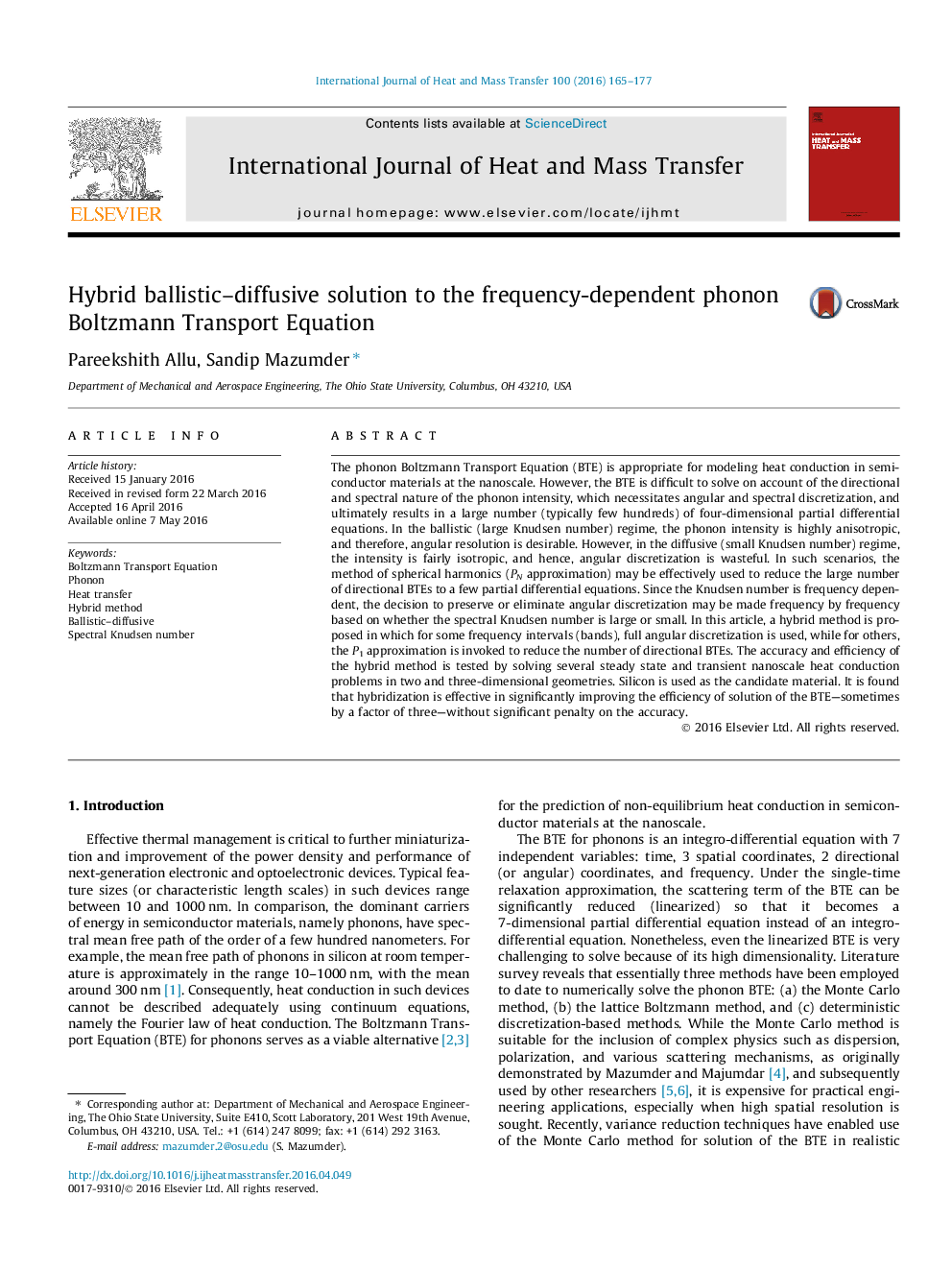| Article ID | Journal | Published Year | Pages | File Type |
|---|---|---|---|---|
| 656347 | International Journal of Heat and Mass Transfer | 2016 | 13 Pages |
•A hybrid solver for the frequency-dependent phonon BTE was developed and tested.•The CADOM and the P1 approximation were hybridized based on Knudsen number.•Steady state and transient 2D and 3D heat conduction computations were performed.•The hybrid method was found to be accurate and computationally efficient.
The phonon Boltzmann Transport Equation (BTE) is appropriate for modeling heat conduction in semiconductor materials at the nanoscale. However, the BTE is difficult to solve on account of the directional and spectral nature of the phonon intensity, which necessitates angular and spectral discretization, and ultimately results in a large number (typically few hundreds) of four-dimensional partial differential equations. In the ballistic (large Knudsen number) regime, the phonon intensity is highly anisotropic, and therefore, angular resolution is desirable. However, in the diffusive (small Knudsen number) regime, the intensity is fairly isotropic, and hence, angular discretization is wasteful. In such scenarios, the method of spherical harmonics (PN approximation) may be effectively used to reduce the large number of directional BTEs to a few partial differential equations. Since the Knudsen number is frequency dependent, the decision to preserve or eliminate angular discretization may be made frequency by frequency based on whether the spectral Knudsen number is large or small. In this article, a hybrid method is proposed in which for some frequency intervals (bands), full angular discretization is used, while for others, the P1 approximation is invoked to reduce the number of directional BTEs. The accuracy and efficiency of the hybrid method is tested by solving several steady state and transient nanoscale heat conduction problems in two and three-dimensional geometries. Silicon is used as the candidate material. It is found that hybridization is effective in significantly improving the efficiency of solution of the BTE—sometimes by a factor of three—without significant penalty on the accuracy.
